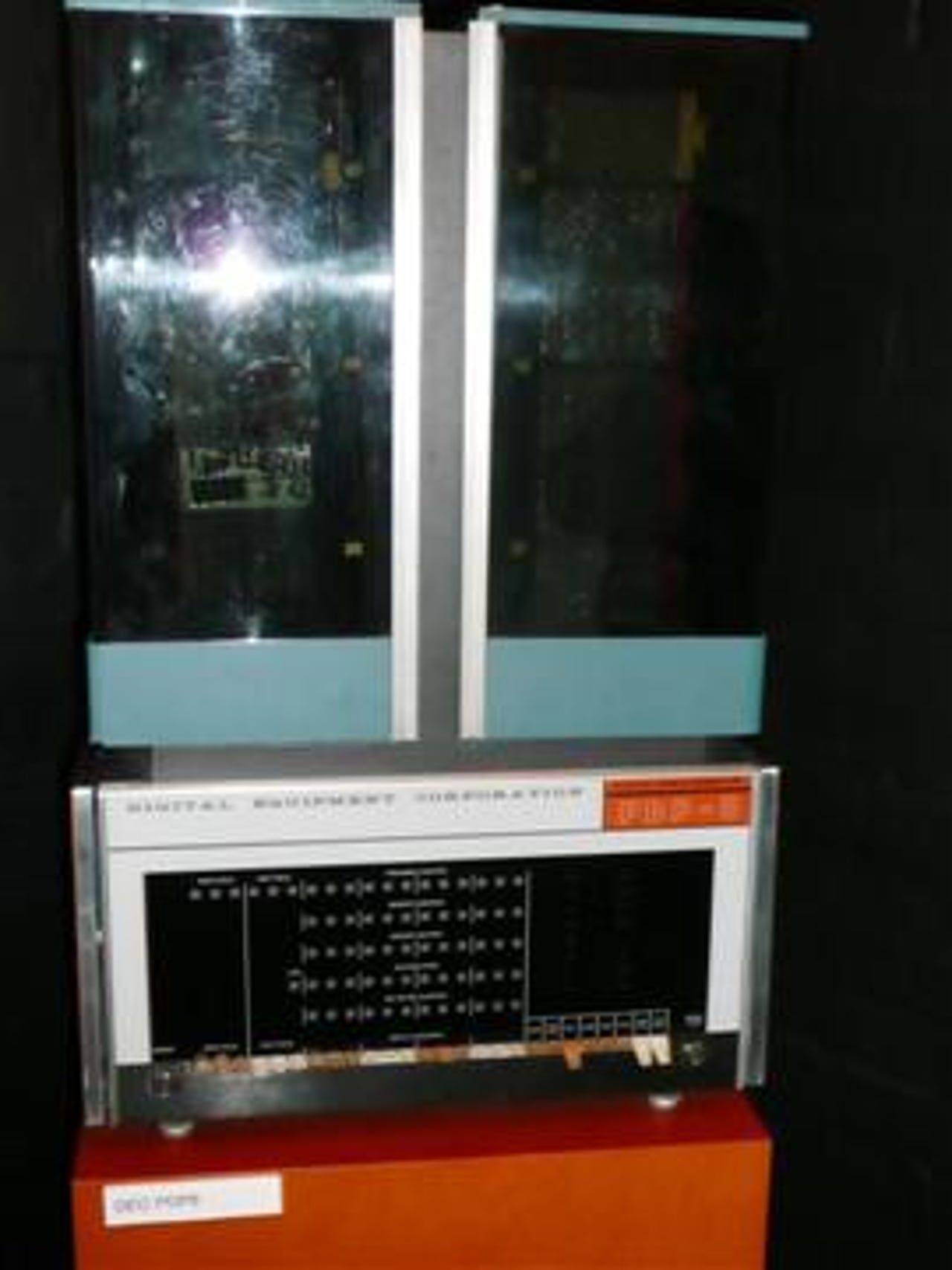Gallery: The evolution of the PC


But this is the great granddaddy of today's netbooks and smartphones, it was the first computer to be mass produced and sold more than 50,000 - despite costing a princely $18,000 on its introduction in 1965.
The PDP-8 kicks off The National Museum of Computing's PC Gallery, which opened Friday in London, where the story of the evolution of the modern PC is told using 50 machines that defined personal computing.
Britain plays a key part in this story of how PCs became cheap, user-friendly and infinitely more powerful, and is well represented by machines from the 1980s - the golden age of computer manufacturing in the UK.
Photo credit: Nick Heath/silicon.com
It still cost £850 (US $795 in 1977)- but the closely set keyboard, was dubbed the "chiclet keyboard" because it resembled the popular US chewing gum.
Photo credit: Nick Heath/silicon.com
Targeted at the education market it sported a 4MHz processor, 4KB of memory and came with a separate keyboard and monochrome monitor. On launch it cost £3,266.
Photo credit: Nick Heath/silicon.com
The Sinclair ZX81 cost just £69 ($100 in the U.S.) on release in 1981 and was a follow-up to the Sinclair ZX80, which is now extremely rare.
With a 3.25MHz processor and 1KB of memory the ZX81 had a membrane keyboard, could connect to an TV and load programs from an ordinary tape recorder.
Photo credit: Nick Heath/silicon.com
Acorn anticipated it would sell 12,000 machines but went on to sell 1.5 million.
Launched in 1981 at a cost of £299, it ran at 2MHz and had up to 128KB of memory.
Lin Jones, project manager at The National Museum of Computing, said the British boom in personal computing during the 1980s, which gave rise to the BBC, Spectrum and Amstrad, had inspired a generation of programmers.
She said: "Today Britain rules the world for computer games programmers and the brains behind it grew up playing games and programming in Basic on these computers."
Acorn went on to produce the Archimedes series of computers and chips developed by its subsidiary ARM are used in many different mobile phone handsets today.
Photo credit: Nick Heath/silicon.com
This IBM model 5150 sported a 4MHz 8088 processor and 64K of memory. In 1981 it cost roughly $1,565.
Photo credit: Nick Heath/silicon.com
The computer cost $5,400 on its launch in 1982.
Photo credit: Nick Heath/silicon.com
Released during the boom years for British home computing it had a 0.89MHz processor and 32KB of memory.
Photo credit: Nick Heath/silicon.com
The £4,500 ($9,995 in the U.S.) machine had a 5MHz processor, support for up to 2MB of memory and a large high resolution display.
The computer was ahead of its time, offering protected memory that would not be found in the Mac OS X operating system until it was released in 2001.
Photo credit: Nick Heath/silicon.com
Launched in 1983, the Oric-1 had a 1MHz processor and up to 48KB of memory. Its £129 price tag matched the pricing of models of the competing ZX Spectrum.
The Atmos model added a keyboard with full-sized individual keys and an updated V1.1 ROM.
Photo credit: Nick Heath/silicon.com
Processor, keyboard, tape recorder and monitor were all included and it ran a large number of programs.
The 4MHz, 64K memory machine cost about £700 on its launch in 1984.
Photo credit: Nick Heath/silicon.com
The Mac was followed up by the Mac Classic (pictured) in 1990. It was the first Macintosh to sell for less than US$1,000.
Photo credit: Nick Heath/silicon.com
Launched in 1981, it was about the same size and weight as a suitcase and cost more than £1,500 ($1,795 in the U.S.).
Its use was limited by a built-in 13cm display and single density floppy disk drive.
Despite this the 4MHz 64K machine was popular, shipping 10,000 units each month and spawning a range of imitators at its peak.
Photo credit: Nick Heath/silicon.com
It included a full keyboard, a four by 20-line display, storage device and rechargeable batteries with a Microsoft Basic operating system.
The machine was used for many years in pharmacies to send orders to wholesalers and can still be found in use today.
Photo credit: Nick Heath/silicon.com
Sales of the PC Convertible were poor, as it was hampered by a hard to read and oddly shaped LCD screen, did not feature PC serial and parallel ports and was not much faster than the Portable model that it replaced.
The £1,800 ($1,995 in the U.S.) machine ran at 4.77MHz and had 256KB of memory.
Photo credit: Nick Heath/silicon.com
Photo credit: Nick Heath/silicon.com
Despite offering many features of a traditional PC it was not as commercially successful as Apple had planned.
The device was generally known as the Newton and cost more than $1,000.
Photo credit: Nick Heath/silicon.com
In the exhibition the iPhone represents today's generation of smartphones that are able to combine touchscreen, handwriting and speech recognition with the functionality of phones, PDAs, games consoles, cameras, TVs, MP3 players, DVD players and sat-nav devices.
The National Museum of Computing's (TNMOC) Jones said: "We have gone full circle from the PDP-8 to the smartphone and netbook, it means that today you have got your email, the internet and everything that you need in your hands."
Photo credit: Nick Heath/silicon.com
TNMOC is based at Bletchley Park, home to the World War II Enigma codebreakers, near Milton Keynes.
Photo credit: Nick Heath/silicon.com